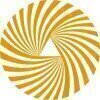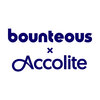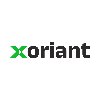Filter interviews by
AML RightSource Analyst II Interview Questions and Answers
AML RightSource Analyst II Interview Experiences
1 interview found
I appeared for an interview in Apr 2024.
Case study room related to Transaction monitoring
(2 Questions)
- Q1. What is AmL ?
- Q2. What is Pep ?
- Ans.
Pep is a term commonly used to refer to energy, enthusiasm, or liveliness.
Pep can refer to a person's high energy or enthusiasm levels.
It can also refer to a type of seasoning or condiment, such as lemon pepper or chili pepper.
In sports, pep can refer to a team's spirit or motivation to perform well.
Pep can also be used in marketing to describe a promotional campaign or event aimed at generating excitement.
Skills evaluated in this interview
Top trending discussions






Interview questions from similar companies
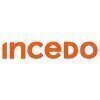
I applied via Referral and was interviewed in Jul 2020. There were 3 interview rounds.
Interview Questionnaire
3 Questions
- Q1. Why do you want to join Incedo, what is your plan in future, explain your past experience with an example
- Ans.
I am drawn to Incedo for its innovative approach and growth opportunities, aligning with my career aspirations in technology consulting.
Incedo's commitment to innovation resonates with my passion for technology and problem-solving.
I admire Incedo's collaborative culture, which I experienced in my previous role at XYZ Corp, where teamwork led to a successful project launch.
My future plan includes advancing my skills in ...
- Q2. Basic of capital market
- Q3. Market capitalisation, capital market, derivatives, accounting knowledge
Interview Preparation Tips

I applied via Walk-in and was interviewed before Nov 2020. There were 3 interview rounds.
Interview Questionnaire
2 Questions
- Q1. A few terms related to mutual fund industry were asked.
- Q2. What do you understand by market capitalisation?
- Ans. Total number of shares outstanding multiplied by the price of one share.
Interview Preparation Tips
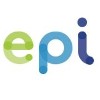
I applied via Company Website and was interviewed in May 2024. There was 1 interview round.
Nice cv related questions is their
Interview Preparation Tips

I applied via Campus Placement and was interviewed before Sep 2023. There was 1 interview round.
(2 Questions)
- Q1. Explain random forest
- Ans.
Random forest is an ensemble learning method that builds multiple decision trees and merges them to improve accuracy and prevent overfitting.
Random forest is a type of ensemble learning method.
It builds multiple decision trees during training.
Each tree is built using a subset of the training data and a random subset of features.
The final prediction is made by averaging the predictions of all the individual trees.
Random...
- Q2. What is boosting
- Ans.
Boosting is a machine learning ensemble technique where multiple weak learners are combined to create a strong learner.
Boosting is an iterative process where each weak learner is trained based on the errors of the previous learners.
Examples of boosting algorithms include AdaBoost, Gradient Boosting, and XGBoost.
Boosting is used to improve the accuracy of models and reduce bias and variance.
Skills evaluated in this interview


(2 Questions)
- Q1. Why are you looking for a change?
- Q2. Tell me about yourself.
Interview Preparation Tips

I applied via Referral and was interviewed in Aug 2023. There were 2 interview rounds.
(1 Question)
- Q1. Technical terms from jd
(1 Question)
- Q1. Behaviour and previous company related questions

I applied via Referral and was interviewed before May 2023. There were 3 interview rounds.
(1 Question)
- Q1. They focusing on communication and ask capital markets, derivatives related questions.
(1 Question)
- Q1. Mutual fund, hedge fund, private equity, etf, performance fee, management fee, NAV calculation.
(1 Question)
- Q1. Same as technical and ask some behavioural questions.
Interview Preparation Tips

I applied via Naukri.com and was interviewed in May 2024. There was 1 interview round.
(2 Questions)
- Q1. What is nav describe
- Ans.
NAV stands for Net Asset Value, which represents the per-share value of a mutual fund or exchange-traded fund (ETF).
NAV is calculated by subtracting a fund's liabilities from its assets and dividing by the number of shares outstanding.
It is used to determine the price at which investors can buy or sell shares of the fund.
NAV is typically calculated at the end of each trading day.
For example, if a mutual fund has assets...
- Q2. What is the function of custodian bank
- Ans.
Custodian banks are financial institutions responsible for safeguarding assets, such as securities and cash, on behalf of institutional clients.
Provide safekeeping of assets
Settle trades on behalf of clients
Collect income on assets
Process corporate actions
Provide reporting and other administrative services
Act as a liaison between the client and the investment manager
Interview Preparation Tips

I appeared for an interview in Sep 2024, where I was asked the following questions.
- Q1. Self-Introduction
- Ans.
I am a dedicated professional with a passion for problem-solving and a strong background in project management and teamwork.
Background: I hold a degree in Business Administration from XYZ University.
Experience: I have 3 years of experience in project management at ABC Corp, where I led a team to successfully complete a major project.
Skills: Proficient in tools like Microsoft Project and Trello, which I used to streamli...
- Q2. Related to Testing and Google Sheets.
AML RightSource Interview FAQs
Tell us how to improve this page.
AML RightSource Interviews By Designations
- AML RightSource Associate Analyst 1 Interview Questions
- AML RightSource Associate Analyst Interview Questions
- AML RightSource Senior Analyst Interview Questions
- AML RightSource Analyst Interview Questions
- AML RightSource Associate Analyst 2 Interview Questions
- AML RightSource AML Analyst Interview Questions
- AML RightSource Manager Interview Questions
- AML RightSource Associate Interview Questions
- Show more
Overall Interview Experience Rating
based on 1 interview experience
Difficulty level
Duration
Interview Questions from Similar Companies
AML RightSource Analyst II Reviews and Ratings
based on 3 reviews
Rating in categories
|
Associate Analyst 2
418
salaries
| ₹4 L/yr - ₹8.1 L/yr |
|
Associate Analyst
335
salaries
| ₹2.9 L/yr - ₹6.5 L/yr |
|
Associate Analyst 1
325
salaries
| ₹3.3 L/yr - ₹6 L/yr |
|
Senior Analyst
118
salaries
| ₹5.6 L/yr - ₹10.2 L/yr |
|
Senior Analyst 1
99
salaries
| ₹7 L/yr - ₹9.5 L/yr |
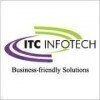
ITC Infotech

Test Yantra Software Solutions

CitiusTech
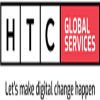
HTC Global Services
- Home >
- Interviews >
- AML RightSource Interview Questions





